Some treatments for lymphoma can cause changes to your finger and/or toenails. They are usually temporary, and your nails should return to normal within months after you finish treatment.
Some anti-treatments that can cause changes include:
- Chemotherapy
- Monoclonal antibodies
- Immunotherapies
- Targeted therapy
- Radiation treatment (if the radiation treatment is close to your nails).
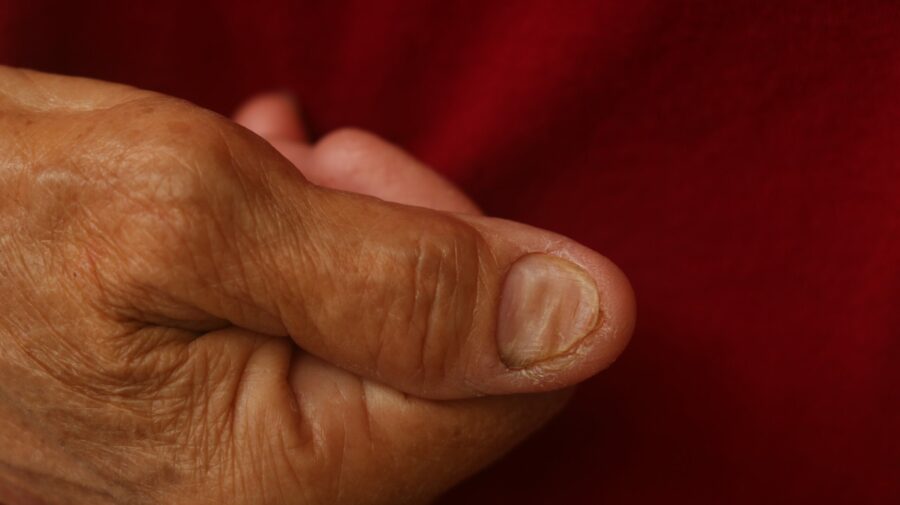
Anaemia
Some treatments for lymphoma can also cause anaemia, which is another cause of nail changes. You will have regular blood tests while you are having treatment, If you are anaemic, it will be picked up in these blood tests and your haematologist or oncologist will let you know if your anaemia needs to be treated.
What do nails do?
Nails protect the tips of our fingers and toes against friction and other bumps. They also help with some functions such as scratching or picking up small items.
We need good nutrition and blood flow to the skin and vessels in our fingers and toes for our nails to grow well. They are attached to the nail bed, which is the skin under the nail, and can be very sensitive. The nail itself is not living, which is why we can trim our nails without pain. However, they do need healthy skin and tissue around them to develop right.
What type of changes can happen?
Most changes to your nails will be temporary and mild. However, some changes may be more serious and need medical attention as they can increase your risk of infection and bleeding from your nail bed or finger/toe tips. You may notice changes in only 1 or 2 of your nails, or all your nails may be affected.
Some of the more minor changes are listed below.
- Darkening of the nail or nail bed.
- Ridges or dents in your nails.
- White or other coloured lines or marks on your nails.
- Brittle nails, or nails that break easier than usual.
- Slower growth.
More serious changes
More serious changes may include:
- Inflammation (swelling) of the skin around and under your finger and/or toenails (paronychia)
- Fissures, which are cracks in the tips of your fingers or toes, or under your nails.
- Redness, pain, tenderness around and under your nails.
- Blood spots or bruising under your nails.
- Nails lifting up from the skin underneath.
- Your nails may fall off.
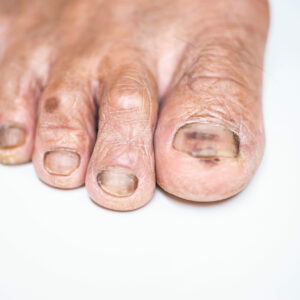
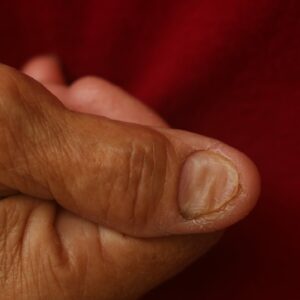
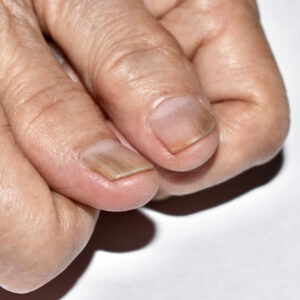
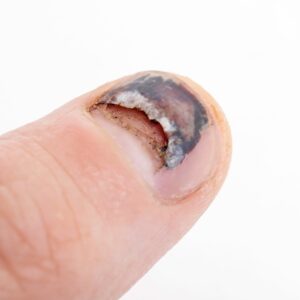
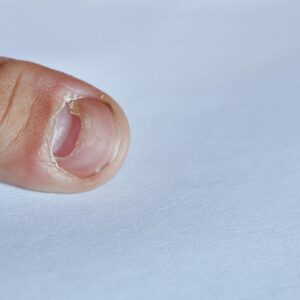
Which chemotherapies cause nails changes?
Some of the more common treatment protocols with medicines that can cause nail changes are listed below.
|
ABVD BEACOPP BEAM CHOP CHOEP CHP CVP |
CODOX CODOX-M DRC EPOCH GIVE Hyper-CVAD ICE |
IGEV IVAC MATRIx MPV POMP PVAG SMILE |
Some of the above protocols may have extra letters attached which shows that as well this protocol, you will have an extra medicine called a monoclonal antibody. Examples of these are R-CHOP, O-CVP, BV-CHP.
Are nail changes permanent?
Most changes are not permanent, and when you finish treatment and your new nails grow, they should start to return to normal within months. The area of discoloration or malformation will remain until it grows out and is cut off.
In rare cases, if you have lost a nail altogether, it may never grow back. The nail bed that is normally protected by your nail may be very sensitive to touch and could make wearing shoes or socks painful. You may also find you cannot use your hands in the way you are used to for sometime. In time the nail bed will become tougher and not be as sensitive, however this can take months.
How to manage nail changes?
Report all nail changes to your haematologist or oncologist. They will need to assess your nails to determine if the changes are related to your treatment, infection or other cause.
In some cases, your doctor may also refer you to a podiatrist (doctor of feet, including toenails) or dermatologist (doctor of skin, hair and nails) for assessment and treatment.
Your local doctor (GP) can also refer you to a dermatologist or podiatrist as part of a GP management plan. Learn more about GP management plans by clicking the button below.
What can you do at home?
If the changes to your nails are bothering you because of how they look, or because they break and get caught on your clothes or scratch you, you can try several things.
- Nail strengtheners can be applied like nail polish to give your nails extra strength.
- Coloured nail polish can cover any changes in colour or white lines.
- Trim nails regularly to keep them short.
- Moisturise your hands and nails at least 2 times each day. Use a moisturiser that is specific for hands and nails.
- If your hands are very dry and nails brittle, moisturise and put on cotton gloves to keep the moisture in overnight – this could also help prevent you scratching yourself while you sleep.
- Wear gloves when doing the dishes, working in the garden or handling chemicals.
- Keep nails clean at all times to prevent infections.
- Do not have a manicure or pedicure while having treatment for lymphoma, these can increase your risk of infection and bleeding.
Moisturisers, nail polish & strengtheners, and cotton gloves can usually be bought online or at your local supermarket or pharmacy.
Questions to ask your doctor
- Are my nail changes related to my treatment?
- Is it a short-term or long-term problem?
- When will my nails return to normal?
- Is it safe for me to use nail strengtheners or nail polish on my nails?
- Are there any activities I should not do while my nails are recovering?
- What signs and symptoms do I need to report to you?
- How serious are my nail changes?
- What can I do to prevent pain or sensitivity around my nails/nailbed?
- Do you recommend I see a podiatrist or dermatologist to manage these changes?
Summary
- Nails changes can happen as a side-effect of many different lymphoma treatments.
- Most nail changes are temporary, but some can be permanent.
- Nails changes may only be cosmetic, changing the way your nails look, but some may need medical intervention to prevent infection, bleeding or other complications.
- Podiatrists are doctors who specialise in feet including toenails and may be able to help if your toenails are affected.
- Dermatologists are doctors that specialise in hair skin and nails. They may be able to help if you have problems with your nails on your fingers or toes.

